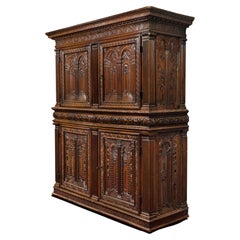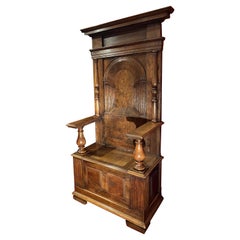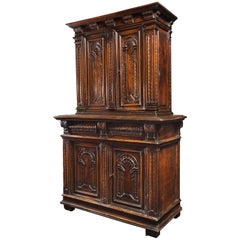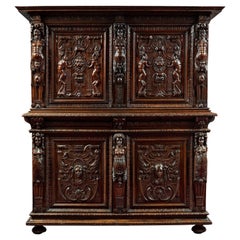Want more images or videos?
Request additional images or videos from the seller
1 of 6
Rare Renaissance Caquetoire with a Perspective motif from Lyon
$33,504.77List Price
About the Item
- Dimensions:Height: 45.67 in (116 cm)Width: 25.6 in (65 cm)Depth: 16.93 in (43 cm)
- Style:Renaissance (Of the Period)
- Materials and Techniques:
- Place of Origin:
- Period:
- Date of Manufacture:16th century
- Condition:Wear consistent with age and use.
- Seller Location:Saint-Ouen, FR
- Reference Number:Seller: N°147 Caquetoire1stDibs: LU3115337006412
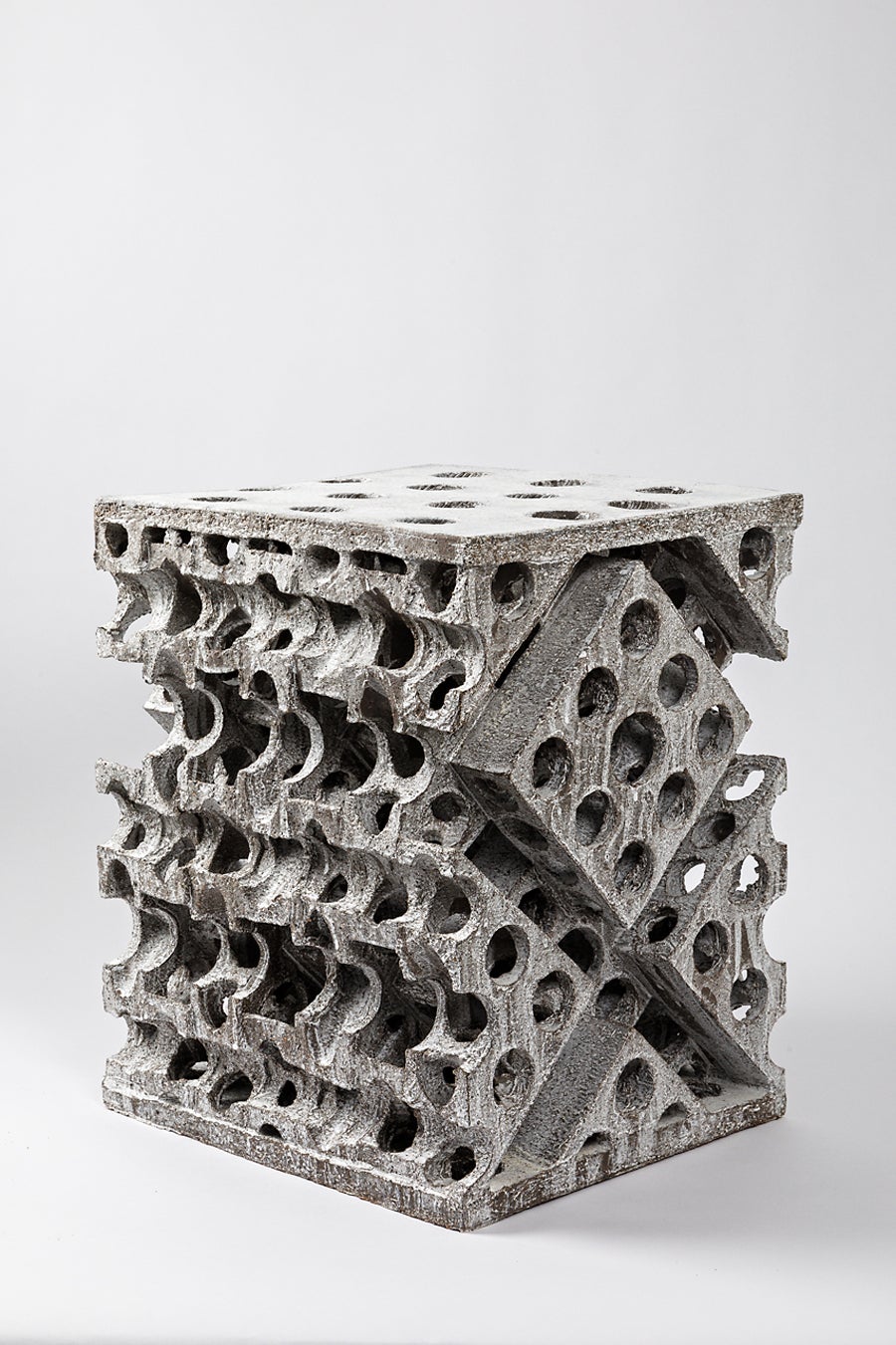
About the Seller
5.0
Vetted Professional Seller
Every seller passes strict standards for authenticity and reliability
Established in 2016
1stDibs seller since 2017
194 sales on 1stDibs
Typical response time: 2 hours
Authenticity Guarantee
In the unlikely event there’s an issue with an item’s authenticity, contact us within 1 year for a full refund. DetailsMoney-Back Guarantee
If your item is not as described, is damaged in transit, or does not arrive, contact us within 7 days for a full refund. Details24-Hour Cancellation
You have a 24-hour grace period in which to reconsider your purchase, with no questions asked.Vetted Professional Sellers
Our world-class sellers must adhere to strict standards for service and quality, maintaining the integrity of our listings.Price-Match Guarantee
If you find that a seller listed the same item for a lower price elsewhere, we’ll match it.Trusted Global Delivery
Our best-in-class carrier network provides specialized shipping options worldwide, including custom delivery.You May Also Like
Gothic style linenfold Caquetoire Armchair
Located in Troy, NY
The linear design, understated decoration of the linen-fold back panel and comfortable proportion give this chair a timeless look.
Category
Antique 19th Century English Gothic Armchairs
Materials
Oak
Italian Oak With Nailed Brown Leather Renaissance Armchair From The 18th Century
Located in Silvolde, Gelderland
Beautiful 18th century 'Renaissance' oak armchair with spool and craftsmanship details upholstered with leather. The leather is still in good condition and is nailed to the chair wit...
Category
Antique Late 18th Century Italian Renaissance Armchairs
Materials
Brass
$2,806
H 37.01 in W 24.02 in D 23.63 in
Large Carved Oak Renaissance Style Armchair from France, C. 1890
Located in Dallas, TX
Hand-carved in the Renaissance style in France, circa 1890, this imposing oak armchair features a verdant tapestry affixed with iron nailheads. The sc...
Category
Antique 1890s French Renaissance Armchairs
Materials
Tapestry, Upholstery, Oak
Original Armchair from the 60s, Fabric with Floral Motif
Located in Buggiano, IT
Original armchair from the 60s, fabric with floral motif.
Italian design.
Comes from an old country house in the Chianti area of Tuscany.
As shown in the photographs and videos, ther...
Category
Vintage 1960s Italian Mid-Century Modern Armchairs
Materials
Iron
$277 Sale Price
20% Off
H 28.75 in W 22.05 in D 19.69 in
FOUR ANTIQUE 1640 CAQUETOIRE CARVED WALNUT POLYCHROME PAINTED ARMCHAIRs
Located in West Sussex, Pulborough
Royal House Antiques
Royal House Antiques is delighted to offer for sale this super rare suite of four totally original 17th century circa 1640-1680 French Caquetoire armchairs with...
Category
Antique 1640s French Louis XIV Armchairs
Materials
Leather, Walnut
$20,975 Sale Price / set
20% Off
H 47.84 in W 25.01 in D 19.3 in
PAIR OF ANTIQUE 1640 CAQUETOIRE CARVED WALNUT POLYCHROME PAINTED ARMCHAIRs
Located in West Sussex, Pulborough
Royal House Antiques
Royal House Antiques is delighted to offer for sale this super rare pair of totally original 17th century circa 1640-1680 French Caquetoire armchairs with ornat...
Category
Antique 1640s French Charles II Armchairs
Materials
Walnut
$8,799 Sale Price / set
20% Off
H 44.49 in W 21.66 in D 19.3 in
Renaissance Style Italian Armchairs
Located in Madison, MS
This pair of Renaissance style Italian armchairs look to be fit for a king. The tall seat back has beautiful hand carved wood and aged dark painted finish. ...
Category
Antique 19th Century Italian Renaissance Armchairs
Materials
Wood
Renaissance Revival Mahogany Armchairs, 2
Located in Astoria, NY
Pair of Renaissance revival mahogany armchairs, a pair, each with finial topped uprights framing an upholstered back issuing scrolling volute arms, above a square upholstered seat su...
Category
20th Century Unknown Renaissance Armchairs
Materials
Mahogany
Italian Renaissance Walnut Armchair
Located in Queens, NY
Italian Renaissance Savanarola style walnut armchair with gold velvet back and red and gold cut velvet seat, (19th century).
Category
Antique 19th Century Italian Renaissance Armchairs
Materials
Velvet, Walnut
Italian Renaissance Walnut Armchair
Located in Queens, NY
Italian Renaissance Savonarola style walnut armchair with gold velvet back and red and gold cut velvet seat. (19th century).
Category
Antique 19th Century Italian Renaissance Armchairs
Materials
Velvet, Walnut
More From This Seller
View AllImportant Renaissance Cabinet from Lyon 'France' with a Decor of Perspectives
Located in Saint-Ouen, FR
As soon as 1540 France's second Renaissance is in the making, intimately linked to the rediscovery of the Antique world. The development of the printing and engraving industry allows the spread of artworks and models in many cities and countries. The Italian influence can be perceived in every artistic field. While the French king entrust the most talented Italian artists with major projects such as Il Rosso or Primaticcio in Fontainebleau, French artists also travel to Italy to form themselves to this new style. In Italy they get acquainted with the work of Leo Battista Alberti the first to theorize perspective (De Pictura, 1435-36) and architecture (De re oedificatoria, 1541). Those two publications would have a revolutionary impact on arts.
Furniture is marked by the work of the most famous Italian architects of the time as well as French architects. Indeed Philibert de l'Orme competes with Alberti and by the end of his life publishes several treaties including one devoted to a theory of architecture (1567). Unfortunately he would not live to complete the second volume. In this treaty he expresses his interest for mathematical norms applied to architecture, copied from the Antique. His journeys in Italy allowed him to accumulate the most sophisticated references. Jean Bullant, another architect of great talent also theorizes his practice. He establishes rules characterizing Greco-Roman art staying faithful to Vitruvius.
Following this new inspiration the structure of furniture evolves. From then on appear columns, capitals, cornices, friezes and architraves. The ornamentation uses this inspiration as well with egg-and-dart, palm leaf and rose adorning the most beautiful pieces.
In Lyon, crossroad where meet merchants from everywhere those new experiments are welcomed. Lyon florishing printing industry allows the spreading of models and treaties essential to the artist's work. Thus the first publication of Vitruvius' De Architectura in France would be printed in Lyon in 1532.
Artists from Lyon rediscover and familiarize themselves with the Antique knowledge very early. They adopt those new ideas and use them in their own creations. Lyon cabinet-makers re interpret Antique architecture and Italian Renaissance palaces to give their pieces a pure and harmonious architectural structure. Grooved pilasters are particularly favored. They are topped by capitals of diverse orders always respecting the sequencing with simpler ones for the lower levels and the richest ones on the higher levels. As for the ornamentation, one of the great distinctiveness of Lyon workshops remains the architectural perspective illusions, drawing inspiration from Tuscany.
True masterpiece of the Second French Renaissance this important cabinet illustrates Lyon workshops' taste for fine Italian architecture inspired by Antiquity. An architectural perspective of great quality is treated in symmetry on each panel.
This two-bodied cabinet without recess stands on four rectangular feet. The base comprises a molding, a palm leaf frieze and is bordered by a braid.
The lower body is divided by three grooved pilasters with Tuscan capitals framing two door-leaves. The two panels are encircled by a moudled frame with palm leaves. They are finely carved with a decor of fantasized architecture depicting an Italian Renaissance palace erected symmetrically on each side of a grooved pilaster. On the ground floor a door opens through a stilted arch while the stories are opened with mullioned windows, dormers and occuli. Two large pegged-boss cladded pillars support the entablature enriched by a palm leaf frieze upon which stands an arch whose coffered intrados is centred by a rose. Behind this arch a pyramid appears, standing in front of a second facade with a window topped by a broken curvilinear pediment under a cul-de-four with a shell.
The checker flooring gives depth to the low-reliefs creating vanishing points structuring the panels and guiding the eye of the observer.
A thin laurel braid highlights the belt of the cabinet where are located two drawers. Their facades are adorned by palm leaves in hoops.
The upper body is encircled with palm leaves. The same ternary division as in the lower body appears. However, the pilasters are topped by Ionic capitals with volutes and egg-and-dart. The door-leaves are framed with flowers. On the panels the artist has designed another architectural decor. On the foreground open two arches on top of grooved pilasters with rectangular capitals adorned with palm leaves. The arches are enriched with braids and the coffered intrados bears a decor of roses. The spandrels also bear a flower decor. In the background another arcature hosts a fluted grooved column topped with double basket acanthus capital, characteristic of Corinthian order. The triangular pediment is interrupted by a choux bourguignon.
A large cornice crowns the cabinet. It stands on pilasters and forms an entablature comprising a palm leaf frieze and an egg-and-dart, triglyph and palm leaf cornice.
The cabinet's sides have also been carefully considered. The lower body's panels are enriched with an arch rising above a broken pediment portico hosting a twisted column. Flowers garnish the spandrels. An architectural facade completes the decor. The upper body's panels present two arches supported by a facade opened with dormers and mullioned windows as well as cartouches (one bears the inscription 1580 dating the cabinet) suggesting the interior of an Italian Renaissance palace, confirmed by the chandeliers. The flooring leads our gaze to a second arch with a broken curvilinear pediment where stands a flower vase. This arch opens onto a perspective of another facade along a road.
Inside the cabinet, on the lower body door-leaves appear two designs. On the right door is depicted a Crucifixion. Saint Mary and Saint John flank the Christ on the cross. In the bottom part is inscribed « Dure uiator abis nihil haec spectacula curas / Pendenti cum sis unica cura Deo. / Tota suo moriente dolet natura Magistro. / Nil qui solus eras caussa dolenda doles. ». The signature [Christoff Swartz Monachiensis pinx[it] / Ioa[nnes] Sadeler sculp[it]] tells us it was made by Johan Sadeler I (1550-1600) after Christoph Schwartz (1548-1592). This engraving belongs to an ensemble depicting the Passion of Christ Johan Sadeler executed in 1589 after an altar piece painted by Christoph Schwartz for the private chapel of Renée of Loraine, wife of Duke William V of Bavaria. This altar piece made of nine copper panels has been destroyed during the 19th century. The Crucifixion panel once in the centre of the altar piece is the only one that survived and is today kept in Munich's Alte Pinakothek.
On the left door appears Saint Francis receiving the stigmata. The inscription says : « Signastidomine Servum Tuum. Franciscum. Signis Redemptionis Nostrae ».
This Renaissance cabinet with an architectural decor appearing as much in the structure faithful to Antique rules...
Category
Antique 16th Century European Renaissance Cabinets
Materials
Walnut
Renaissance Cathedra with Perspective Motif
Located in Saint-Ouen, FR
RENAISSANCE CHAYÈRE WITH PERSPECTIVE MOTIF
ORIGIN: FRANCE, LYON
ÉPOQUE: FIRST HALF OF THE XVI CENTURY
Height: 166cm
Width: 74cm
Depth: 47cm
Walnut wood
From: Château de Quintin’...
Category
Antique 16th Century Office Chairs and Desk Chairs
Materials
Walnut
French Renaissance Cabinet with Perspectives
Located in Saint-Ouen, FR
This Renaissance Cabinet reveals the great mastery of the Lyon workshops which are at the origin of its realization. Sculptors and wood-carvers worked here in symbiosis to express an...
Category
Antique 16th Century French Renaissance Cabinets
Materials
Walnut
Renaissance Cabinet from Burgundy or Lyon Region
Located in Saint-Ouen, FR
Renaissance cabinet from Burgundy Or Lyon Region
Origin : Burgundy Or Lyon, France
Period : Second Half 16th Century, C. 1580
Height : 209cm
Length : 184cm
Depth : 71cm
Good condition
Walnut wood, original keys and keyholes
Around the middle of the 16th century the conception and ornamentation of French furniture evolves. The start of major building projects, such as the castle of Fontainebleau, gives artists a new impulse. Inventive and rich formulas are developed there, before spreading to all of Europe thanks to engravings and printed leaflets. Furthermore, Italian artists working on such construction sites bring French artists and patrons a renewed taste for the Antique.
Regarding the art of furnitures, the most complex scenes and figures are drawn from illustrated books, ornament and emblem compendiums and engraving compilations. Rather than copying those images the artisans feed their inspiration and decline the motifs in numerous variations.
The ornamental grammar marks a return to the Antique : palm leaf, acanthus, egg-and-dart, greek, scroll, fluted pilaster… It is in Primaticcio’s and Il Rosso’s stuccos made around 1540-1550 that we have to look for the origin of leather cut-outs, masks, chimaeras, harpies, sheathed figures, fruit and flower garlands that soon enrich every pieces of French furniture.
The structure of the pieces of furniture also evolve thanks to the re discovery of Antique architectures, rigorously used as a model.
This cabinet presents an imposing structure and a rich and original decor exemplifying the production of the late 16th century, infused with Italian, Antique and Fontainebleau influences.
It stands on a moulded base ornate with palm leaves. It opens with four door-leaves and two drawers in the belt. Six whimsical terms divide the facade.
The lower body is horizontally divided by three sheathed female terms. The two standing on the lateral posts are topped with fruits while the body is covered by acanthus leaves carved with precision, belted at the waist. The term standing on the central door-jamb is crowned with laurel leaves and is draped in the Antique fashion. A wincing mask hides the key hole.
The two door-leaves are centred by a beautiful mask carved in a strong relief. They wear stylised feathered headdress and are set on draperies. Straps, leather scrolls, acanthus leaves and a shell are spread around the masks. The recessed panels are secured in frames ornate with acanthus leaves.
The belt is flanked by two large mouldings enriched with variations of acanthus leaves. The drawers are carved with choux bourguignons and palm leaf motifs minutely executed. The consoles between each drawer bear tormented wincing masks, showing horns as if they were fauns or imps.
The upper body is framed by two male terms characterised by a strong and nervous musculature, their manhood hidden by drapes secured thanks to a winged lion head. The term on the left appears to be younger and is wincing while the one on the right has a beard. The central female term brings contrast with her youth and sensuality. As it is the case on the lower body, the key hole is hidden behind the mouth of a faun’s mask placed on the drapes barely covering the intimacy of the caryatid.
The panels of the upper body present an idealised architecture comprising pilasters and sinuous broken pediments. The pilasters are flanked by two satyrs with goat legs. In the centre appears an important lion mask.
The terms of the upper body support the cornice. The entablature carries palm leaves and roses alternating as well as an egg-and-dart frieze. The cornice is adorned with acanthus motifs.
On the sides, the carving is executed flat. A central rose is surrounded by scrolls, flowers and choux bourguignons.
We can admire the variety of the elements employed. The artist vary with great genius many different ornamental motifs : palm leaf, egg-and-dart, laurel leaf, roses, scrolls … But the artist went even further as each profile and each face is individualised and presents different features. You can take a look at the faces of the satyrs flanking the upper body’s panels. The talent of the artist is undeniable.
It makes no doubt the patron who commissioned this cabinet was an aesthete looking for the greatest quality.
The artist who authored this cabinet had a great mastery of composition both in the general design and in the individual panels. They probably drew inspiration from engravings and drawings made especially for the making of this piece of furniture or not. They seem to be familiar with the style of Jacques Androuet du Cerceau. Indeed, we can find in Du Cerceau’s engravings the same juxtapositions of leather cut-outs, masks and fruits. The terms and caryatids used on the facade could very well be inspired by his work as well. The cabinet-maker was also undoubtedly observant of Hugues Sambin, the most famous cabinet-maker and sculptor in the Burgundy of the time. Like Du Cerceau, Sambin left an important ensemble of models particularly useful for the design of cabinets. His publication De l’Oeuvre de la diversité des termes dont on use en architecture (1572) was an essential book for every artisan.
All the motifs testify of the artisan’s high knowledge of forms as well as the precision of their tools : super imposition of ornamental elements, foliages, architectural cut-outs, flat and high reliefs alternating, palm leaves inscribed in circular spaces, wincing faces. It is also a testimony of the artisan’s familiarity with Italian and Fontainebleau productions.
Because of the proficiency of the cabinet-maker in so many different models, this cabinet truly is a master-piece authored by the hand of an authentic master.
The generous carvings executed with great rigour and virtuosity evoke an origin close to Burgundy and Lyon workshops. This cabinet was made by a master of the region during the Second French Renaissance.
Literature
BOCCADOR Jacqueline, Le mobilier français du Moyen-Âge à la Renaissance, Édition d’art Morelle Mayot, 1996
BOS Agnès (dir.), Mobilier du Moyen âge et de la Renaissance, La collection du musée du Louvre, Louvre éditions...
Category
Antique 16th Century Renaissance Cabinets
Materials
Walnut
Exceptional Renaissance Cabinet from Lyon
Located in Saint-Ouen, FR
Exceptional Renaissance Cabinet from Lyon
Origin: Lyon, France
Period: 1540-1580, Second French Renaissance
Measures: Height: 188 cm
Length: 132 cm
...
Category
Antique 16th Century Cabinets
Materials
Walnut
Small Renaissance Cabinet from Lyon
Located in Saint-Ouen, FR
Small renaissance cabinet from Lyon.
ORIGIN: FRANCE, SCHOOL OF LYON
PERIOD: 16th CENTURY
Height:151cm
Depth: 120cm
Length: 54cm
Walnut ...
Category
Antique 16th Century Cabinets
Materials
Walnut
Recently Viewed
View AllMore Ways To Browse
Herman Miller Fiberglass Bucket Chair
Howard Grafton
Howard Nowes
Hunter Armchair
Hunter Safari Chairs
Ikat Fabric Chair
Il Poltrone
Indian Throne
International Silver Company Serial Numbers
Jacobean Throne Chairs
Jean Gillon Rodeio
Jeanneret Bridge
Jenny Kee
Kartell Venice Chair
Kuramata Sing Sing Sing
Late 20th Century Acrylic Armchairs
Late Georgian Fabric
Leather Bridge Chairs
